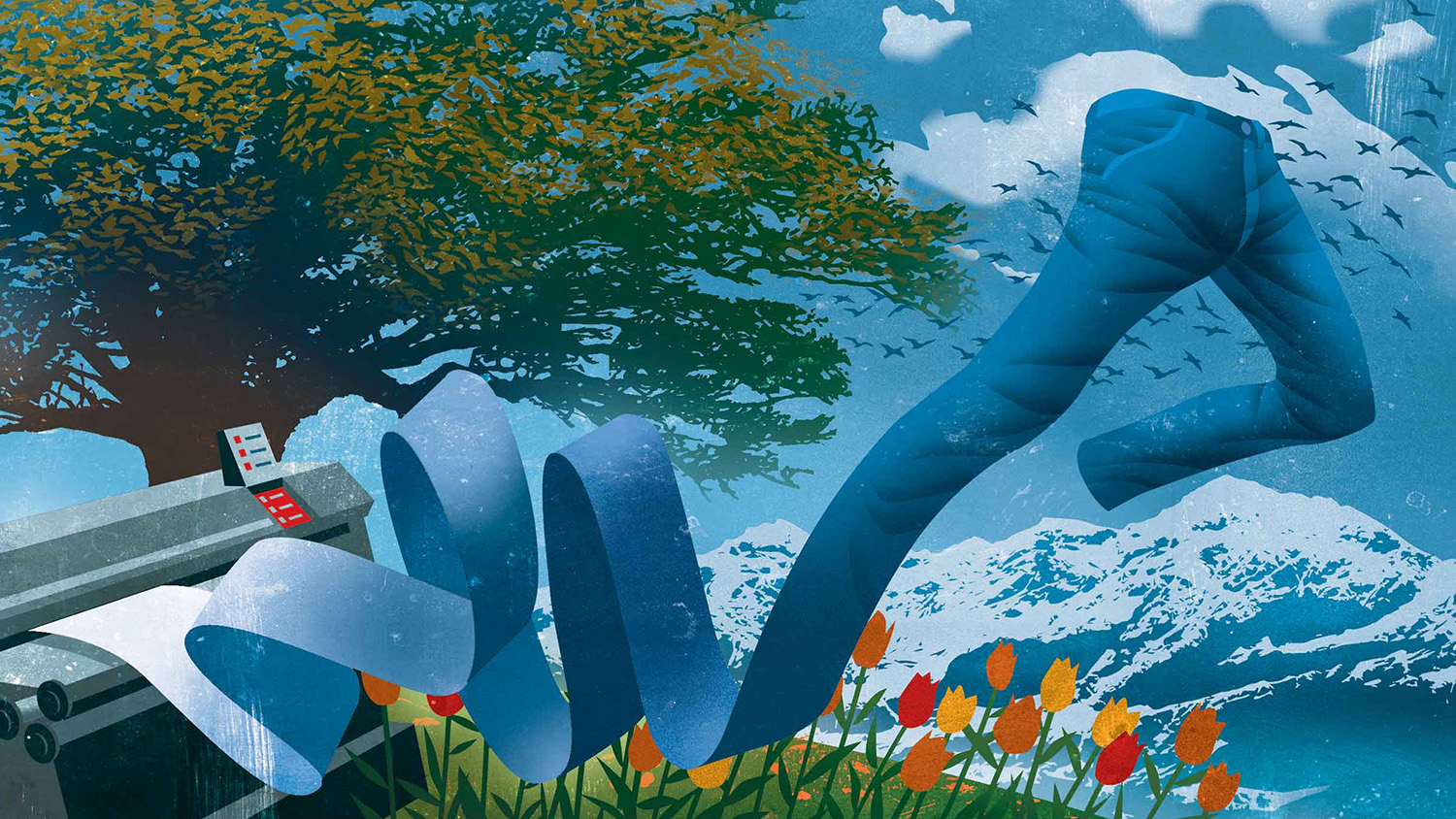Dr. Green Jeans
Coming soon: Your perfect pair of comfy jeans will be dyed by a digital printer, making them more environmentally sustainable than your current dungarees.

By Eleanor Spicer Rice ’03, ’12 PHD
Each year, more pairs of jeans are sold in the United States than there are people who live here. Before they flare over boots or squeeze those thighs, your favorite pants must be dyed, washed, treated and washed again. This process might help keep us on trend, but it has a hefty environmental cost. Denim dyes, which are often toxic, mix with the gallons of water used to treat each pair and get dumped into our waterways.
An NC State research team, led by fashion and textile design professor Lisa Chapman ’99 MS, ’08 PHD, may have found a way to reduce those environmental costs and save money: digitally printing dye on the fabric.
Chapman’s team used an inkjet printer — think of the printer in your home office on steroids — to digitally print dye on denim. “The process requires less water and less energy than traditional denim manufacturing,” says Chapman. In other words, compared to traditional blue jeans, these blue jeans are, well, going green.
After testing their denim printing method, Chapman’s team enlisted 12 textile industry experts to compare printed and traditional denim. The experts found that, though they have a different texture than traditional denim, printed jeans looked almost exactly like traditional denim. Chapman was not surprised. “One of the advantages of digital printing,” she says, “is that you can get near-photographic reproduction of surface coloration.”
One of the advantages of digital printing is that you can get near-photographic reproduction of surface coloration.
Digitally printed fabric is also easily customizable. “[T]here are certain styles of jeans faded in such a way that they’re flattering to the leg,” explains Chapman. The digital-printing process can replicate those styles.
Plus, digital printing can better satisfy supply needs because fabric can be printed on demand. Inkjet printers can effortlessly swap hundreds of colors and mimic styles like acid-washed or distressed jeans. “As we’re moving toward fast production and fast shipment to consumers, it will support mass customization,” Chapman says. Until inkjet jeans are market-ready, Chapman’s team will continue to match the quality and texture of the denim fabric to ensure style and durability.
- Categories:


